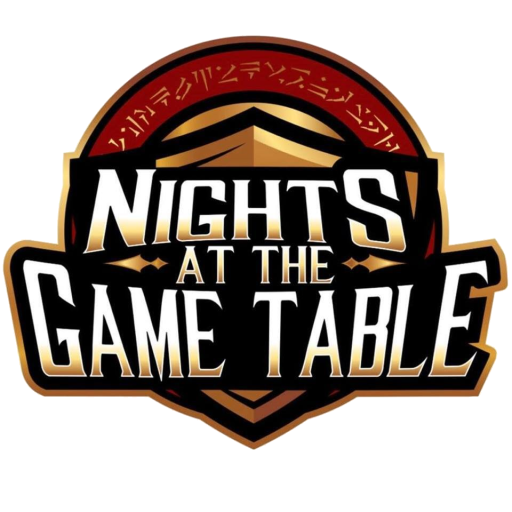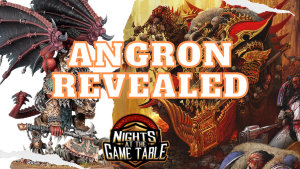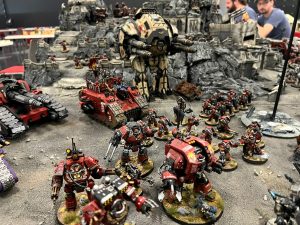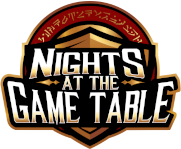Welcome to Warhammer Tactics! Tactics is an updated version of Math-Hammer Monday and Tactical Thursday, which should be familiar to anyone in Game Talk For Gamers! If not, be sure to hop on Facebook and take a look!
Today, we’re going to be talking about Command Points and how to maximize their potential while minimizing the opportunity cost. To do that, we need to discuss what an opportunity cost is.
An opportunity cost is the lost opportunity from choosing a certain option over other options. For example, if I have 10 dollars, and I’m debating between getting some Burger King or some KFC, I have a choice to make here. If I choose to spend my money at KFC, then my opportunity cost is not being able to go to Burger King. This example pertains to money, but the concept applies to any kind of resource. Time, money, the models you include in your list, they all have opportunity costs.
Now that we have an idea of what an opportunity cost is, let’s apply it to how we spend our command points. For many armies, stratagems can make or break a game. When we spend command points on a stratagem, one of the less obvious costs of using that stratagem is being unable to use another stratagem later.
in the game. Most players will use their army specific stratagems fairly well, as many of them tend to be straight forward. However, players will often hemorrhage their valuable command points on the Command Re-roll stratagem, when it’s not really necessary to do so. So, let’s delve into the Command Re-roll, and learn about how we can optimize it’s usage.
If you spend a command point to re roll the number of attacks you get on a weapon that has a random number of attacks, that’s also a command point you will NOT be able to spend later in the game to re roll a pivotal psychic test or charge roll. At high levels of play, you will rarely (but not never!) see a professional player spend a command point to say, re-roll a failed save on a unit so he loses 5 models instead of 6, for example.
Instead, he will accept that extra casualty he could prevent, so he can use it on a more powerful stratagem. To be clear, this doesn’t mean that you should never spend a CP to stop yourself from losing a model, or getting an extra wound on an opponents model. But, those cases should have some kind of value beyond just saving a model or doing damage.
To illustrate, if you decide to spend a command point to re roll a failed save on a unit holding an objective, you aren’t spending a CP to save the model at this point.
Instead, what you’re really doing is spending 1cp to keep yourself on the objective, which could make or break a game. Now, it possibly becomes worth spending the CP, depending on other factors going on in the game.
In addition, we also need to consider the order that we do things in terms of how we spend our command points. This is a more readily apparent version of opportunity costs. Normally, opportunity costs are something you have to consider 2 or 3 turns ahead. However, since we are also only allowed to use a stratagem once in a phase, this means that using a stratagem too early can leave you unable to use it when you really need to later in the phase.
Consider a player who has two units that he can charge with. The player should reserve his Command Re-roll for the charge that is more important, and declare and resolve that charge first.
That way, if he succesfully makes his critical charge, he still has the option to use his re-roll on his second charge. You should always take actions in this sort of order, starting with highest priority, and descending down. This is because that, even if you can remember to save your command point for your most important actions, you want to know if it’s safe for you to spend that CP on your less important options or not. Putting your most important actions last forces you to save that resource until your final action.
So far, we have only talked about the Command Re-roll Stratagem. However, everything we have talked about here applies to every stratagem in the game. A poor use of a Stratagem on Round 2 might deny you the command points you need to use a stratagem to win the game on Round 4. Using a Stratagem on a unit you don’t need to use it on prevents you from using it on the unit that you need to use it on, etc, etc.
Overall, as long as you take a second and think bout your opportunity costs whenever you use a Stratagem, you will see an improvement in your gameplay. You’ll have far less of those “shoot, I wish I could use X right now” moments, and that will help turn losses into wins, especially if your opponent isn’t doing so. This is especially true for stratagems that cost more than one command point, since the opportunity cost that they carry is much higher.
If I spend 3 CP on the “Agents of Vect” stratagem, the loss of your 3 command points, and all the things you could have done with those command points, needs to be outweighed by the value of stopping a stratagem that my opponent is using. If it’s not, it’s heavily detrimental to use Agents of Vect since it costs me so much to use it.
Well, that wraps us up for today. Just remember to make sure you’re taking actions in order of importance, and take a few moments to think about using a Stratagem before you do so. You’ll quickly see an improvement in how you use those resources, and that improvement directly translates into better games on the table.

Warhammer 40k Winning Lists June 11th Edition
With summer in full swing, we see a refreshing number of tournaments kick back up globally, ranging from 3 to 7 rounds



